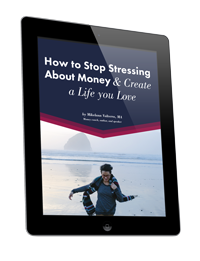Whether you need to spend less when you go out shopping or you want to be a more conscious spender, it helps to have a few tricks under your belt. Stores spend billions on the science of getting you to part with your money. They understand how your brain works and then use this against you. Well, with these tricks under your belt, you can beat them at their game and feel more in control. And you’ll be able to enjoy shopping without coming home with a spending hangover. (This article is focused on brick and mortar shopping. My next one will be on Internet shopping.)
1. Be wary of stores that are new to you. Why? We spend more money when we are in a new-to-us store. This is because dopamine- a wonderful feel good drug in our brain– is activated when we experience something new or exciting. (This is one reason we spend more when we are on vacation. We are in a novel situation experiencing new stores.) So try hard to come back to the store to buy your discovery. You may want to hit the new store at the beginning of your shopping trip and then tell yourself you’ll come back to the store later to make your purchase. Trust me, it simply won’t be as exciting the second time around and you’ll make a more reasoned choice.
2. Leave your credit cards at home when you go out shopping. Stores desperately want you to use a credit card because they know you’ll spend more if you do. (Macy’s is the worst offender, by the way. They are very aggressive in trying to get you to use a Macy’s card. Have you noticed?!) If you know the money is going to come directly out of your bank account, you will be more mindful and usually spend less. In fact, the evidence is overwhelming that when you buy items with a credit card, particularly things you enjoy, and you spend 20-30% more. There is simply too much of a delay between basking in the pleasure of buying those shoes and feeling the pain of having to pay for them– later. You want to “feel” the purchase in the moment. Macy’s be damned. Leave your credit cards at home.
3. The magic 90 minutes. Stores and malls do many things to get you into the “zone” of shopping. Notice that there are never any clocks on the walls of a store, and they often don’t have windows. They are hiding the passage of time. Well, after 90 minutes, you do start to zone out and mindless spending goes up. So do this: set the timer on your phone for 90 minutes. When it goes off, simply stop for a bit. Take a break and have a cup of tea. Look at what you’ve purchased and think about your plan. (Do you want to return anything you just bought?) I’m not saying go home. But taking a break every 90 minutes keeps you from overspending.
4. Limit the number of stores you visit. It’s very simple: the more stores you visit the more you buy. People may tell themselves that they are comparison-shopping. But often people feel like they need to buy something for all the legwork they’ve put in! You become very “invested” in how much time you’ve put in. You’d better at least get something….
5. Don’t carry items around with you that you are contemplating purchasing in a store. The issue is that when you carry products around with you, they begin to feel like yours. You get used to them and you feel a little “pain” if you have to put them back. You feel like you are losing something. (Humans are funny. We actually hate pain and loss more than we love pleasure and gain. It’s a brain thing.) Hence, items that get carried around are more likely to be bought. So if you are eyeing something, keep it on the rack or shelf until you decide. And if you’re worried someone will swoop it up before you decide, “hide” it on a different rack or shelf. Come on; don’t tell me you’ve never done that.
6. Don’t interact with sales people too much. Yes, they are quite friendly. But the more you interact with them, the more likely you are to purchase from them, for several reasons. One is that they are often skilled at selling to you. But people often unconsciously feel, after a point, that they don’t want to let down a sales person who has helped them.

I’m a big fan of learning the difference between “need” and “want” and focusing on your needs and treating yourself occassionaly with wants. When you need something, you can plan for it, research it, and work the expense into your monthly budget.
Wants should be carefully considered and rationed throughout the course of a year. Sure you deserve a treat every now and then, but NEVER at the expense of your monthly budget.
The timing of this article couldn’t be better! Just got home from grocery shopping in 3 different stores, and the amount of money I spent has me spinning. And I hardly bought anything! I’m starting to buy organic, hormone-free meats and vegetables, and these are sooooo expensive. This additional expense causes us to eat less food because it is more carefully grown and packaged, so it costs more. If more people started making healthier food choices (instead of eating cheap fast food) maybe the prices would come down.